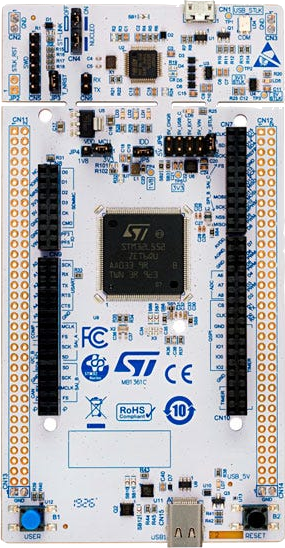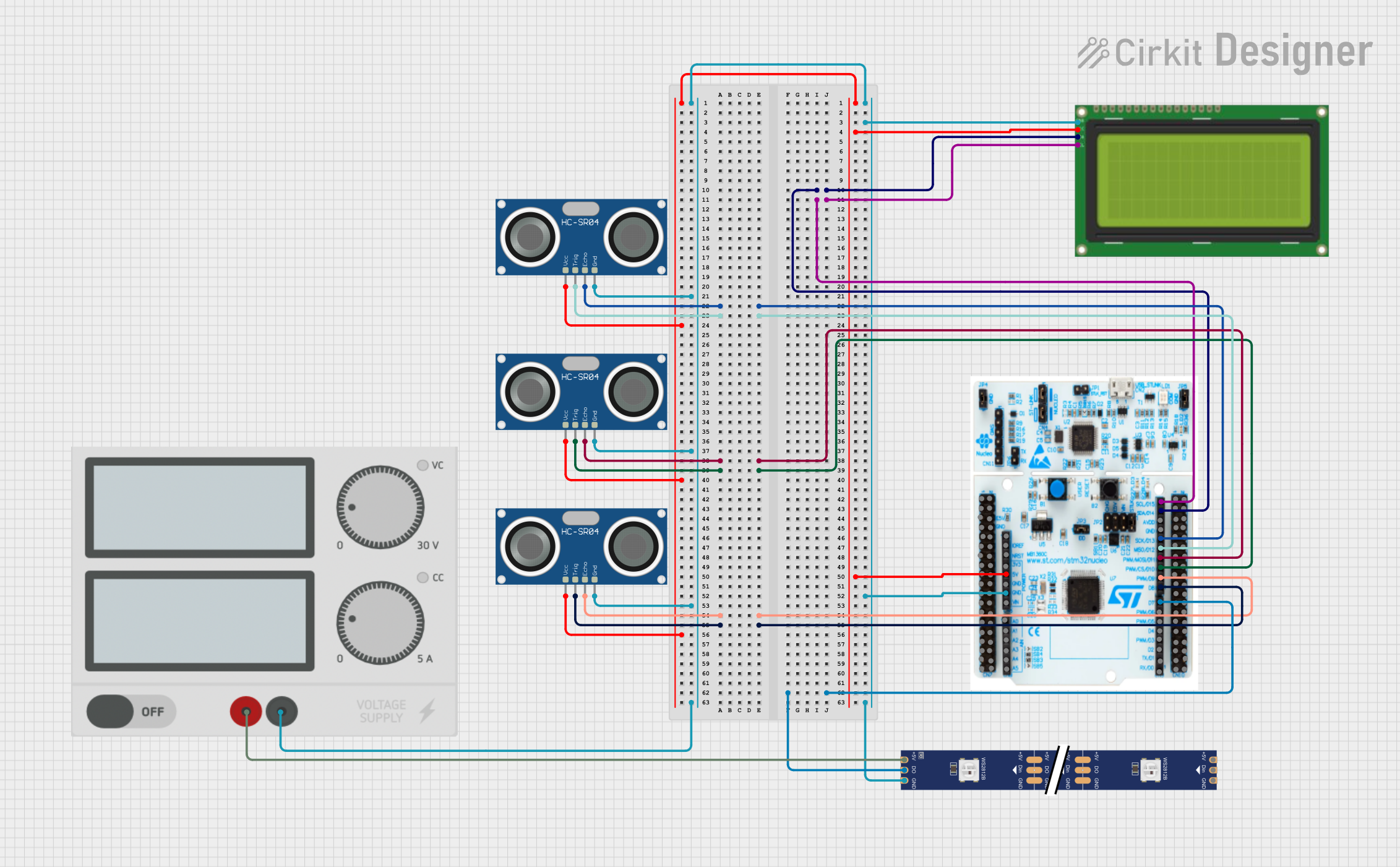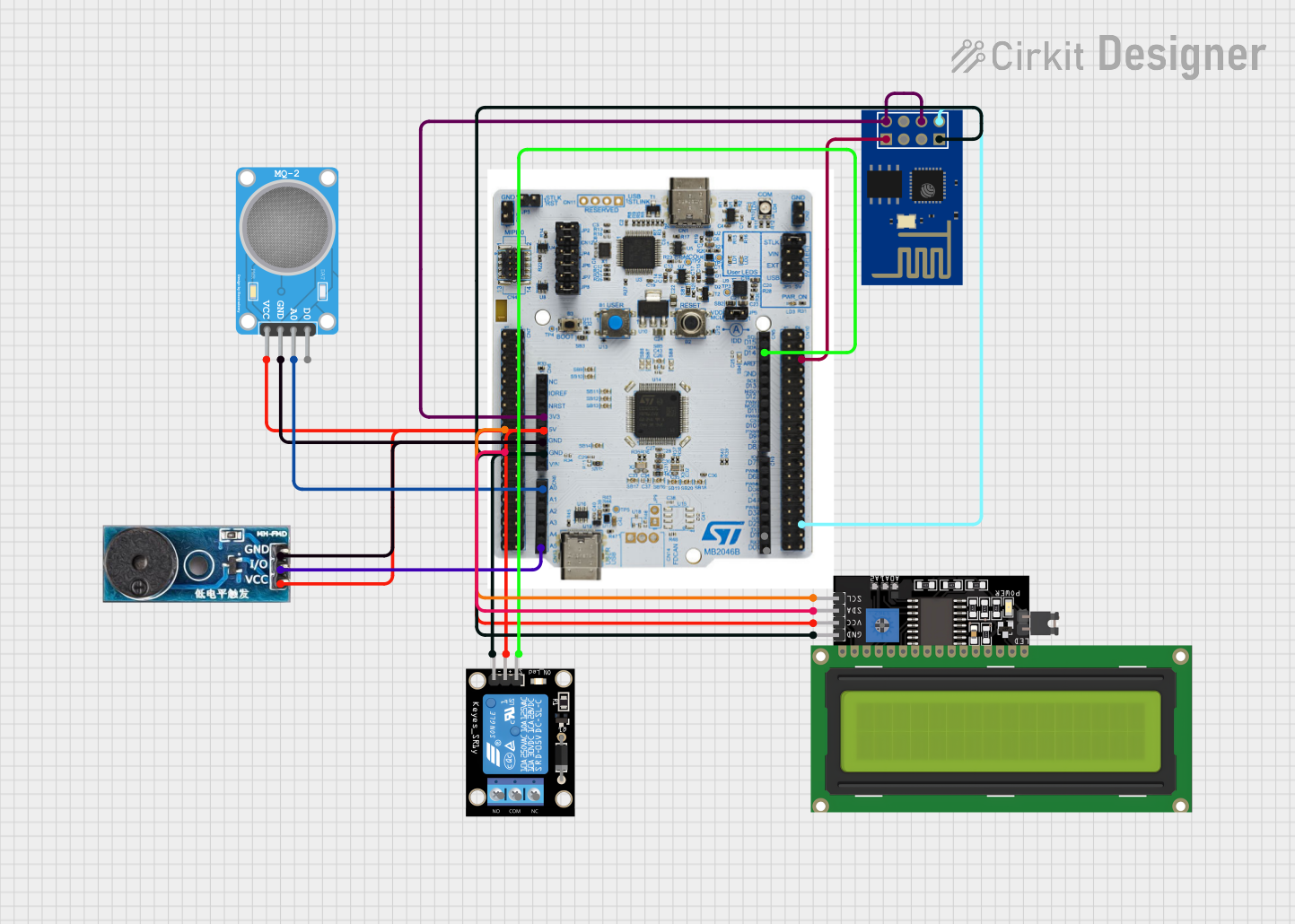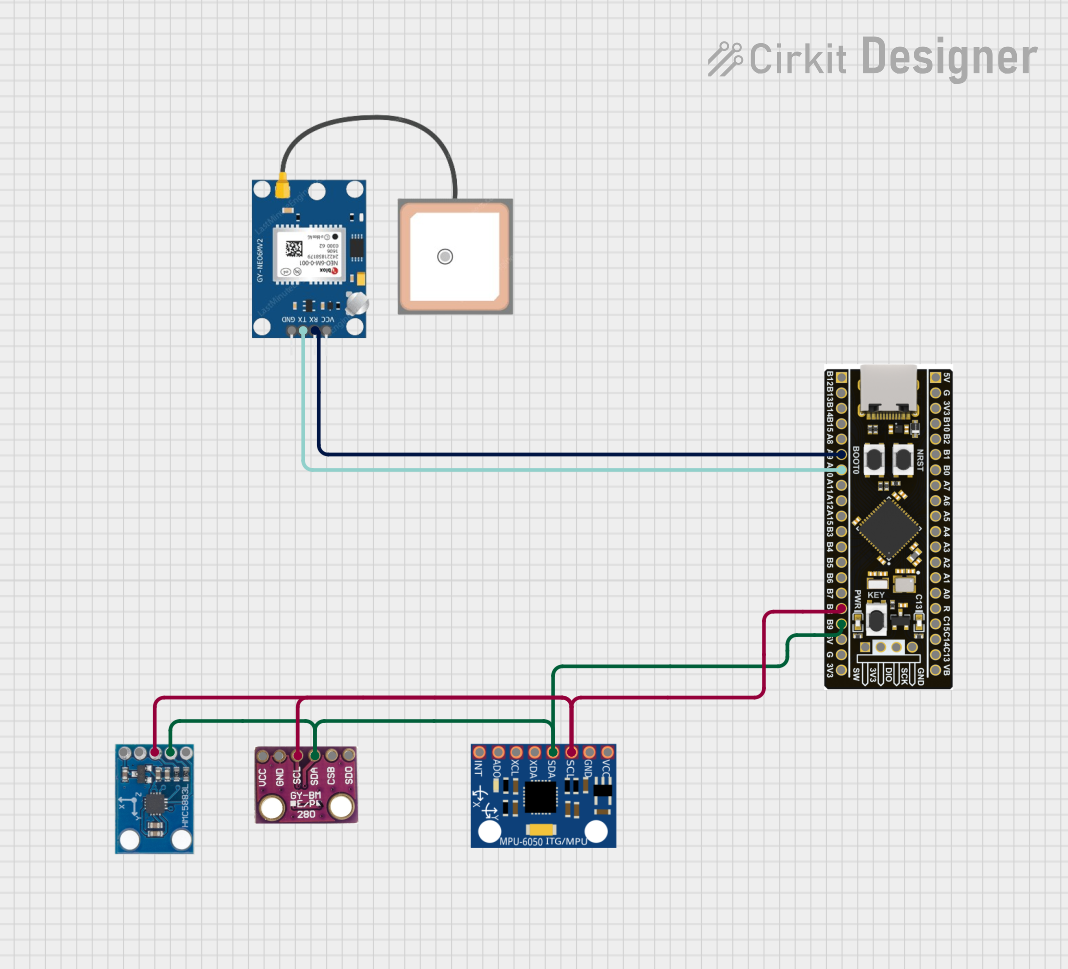
How to Use STM32 NUCLEO L552ZE-Q: Examples, Pinouts, and Specs

 Design with STM32 NUCLEO L552ZE-Q in Cirkit Designer
Design with STM32 NUCLEO L552ZE-Q in Cirkit DesignerIntroduction
The STM32 NUCLEO L552ZE-Q is a development board manufactured by STMicroelectronics. It is based on the STM32L5 series microcontroller, which is designed for ultra-low-power applications with advanced security features. This board provides a flexible platform for prototyping and development, making it ideal for IoT, wearable devices, and other energy-efficient applications.
Explore Projects Built with STM32 NUCLEO L552ZE-Q

 Open Project in Cirkit Designer
Open Project in Cirkit Designer
 Open Project in Cirkit Designer
Open Project in Cirkit Designer
 Open Project in Cirkit Designer
Open Project in Cirkit Designer
 Open Project in Cirkit Designer
Open Project in Cirkit DesignerExplore Projects Built with STM32 NUCLEO L552ZE-Q

 Open Project in Cirkit Designer
Open Project in Cirkit Designer
 Open Project in Cirkit Designer
Open Project in Cirkit Designer
 Open Project in Cirkit Designer
Open Project in Cirkit Designer
 Open Project in Cirkit Designer
Open Project in Cirkit DesignerCommon Applications and Use Cases
- IoT devices requiring low power consumption and secure communication
- Wearable technology
- Industrial automation and control systems
- Medical devices
- Prototyping for secure embedded systems
Technical Specifications
The STM32 NUCLEO L552ZE-Q is equipped with a range of features to support diverse applications. Below are the key technical details:
Key Features
- Microcontroller: STM32L552ZET6Q (ARM Cortex-M33 core with TrustZone)
- Operating Voltage: 3.3V
- Power Supply Options: USB, external power supply, or ST-LINK/V2-1
- Clock Speed: Up to 110 MHz
- Flash Memory: 512 KB
- RAM: 256 KB
- GPIO Pins: 144 (accessible via headers)
- Connectivity:
- USB Full-Speed
- USART, SPI, I2C, CAN, and more
- Onboard Debugger: ST-LINK/V2-1
- Expansion Options: Arduino Uno V3 and ST morpho connectors
- Security Features: TrustZone, Secure Boot, and hardware cryptographic accelerators
Pin Configuration and Descriptions
The STM32 NUCLEO L552ZE-Q features multiple pin headers for GPIO and peripheral connections. Below is a summary of the pin configuration:
Arduino Uno V3 Connector
| Pin Name | Functionality | Description |
|---|---|---|
| A0-A5 | Analog Input | Analog input pins (0-3.3V range) |
| D0-D13 | Digital I/O | Digital input/output pins |
| 5V | Power Output | 5V power supply |
| 3.3V | Power Output | 3.3V power supply |
| GND | Ground | Common ground |
| VIN | Power Input | External power input (7-12V) |
ST Morpho Connector
| Pin Name | Functionality | Description |
|---|---|---|
| GPIO | General Purpose I/O | Configurable as input/output |
| USART | Serial Communication | UART interface for communication |
| SPI | Serial Peripheral Int. | SPI interface for peripherals |
| I2C | Inter-IC Communication | I2C interface for sensors/devices |
| ADC | Analog-to-Digital Conv | Analog signal conversion |
| DAC | Digital-to-Analog Conv | Digital signal conversion |
Usage Instructions
The STM32 NUCLEO L552ZE-Q is designed to be user-friendly and versatile. Follow the steps below to get started:
Getting Started
- Power the Board: Connect the board to your computer using a USB cable or provide external power via the VIN pin.
- Install Development Tools:
- Download and install STM32CubeIDE or another compatible IDE.
- Install the ST-LINK/V2-1 USB driver if required.
- Connect to the IDE:
- Open STM32CubeIDE and create a new project.
- Select the STM32L552ZET6Q microcontroller or the NUCLEO-L552ZE-Q board.
- Write and Upload Code:
- Write your application code in the IDE.
- Compile and upload the code to the board using the ST-LINK debugger.
Example Code: Blinking an LED
The following example demonstrates how to blink an LED connected to pin D13:
#include "stm32l5xx_hal.h"
// Function prototypes
void SystemClock_Config(void);
void GPIO_Init(void);
int main(void) {
HAL_Init(); // Initialize the HAL library
SystemClock_Config(); // Configure the system clock
GPIO_Init(); // Initialize GPIO pins
while (1) {
HAL_GPIO_TogglePin(GPIOB, GPIO_PIN_13); // Toggle LED on pin D13
HAL_Delay(500); // Delay for 500 ms
}
}
void SystemClock_Config(void) {
// Configure the system clock (default settings for simplicity)
RCC_OscInitTypeDef RCC_OscInitStruct = {0};
RCC_ClkInitTypeDef RCC_ClkInitStruct = {0};
RCC_OscInitStruct.OscillatorType = RCC_OSCILLATORTYPE_HSI;
RCC_OscInitStruct.HSIState = RCC_HSI_ON;
RCC_OscInitStruct.HSICalibrationValue = RCC_HSICALIBRATION_DEFAULT;
RCC_OscInitStruct.PLL.PLLState = RCC_PLL_NONE;
HAL_RCC_OscConfig(&RCC_OscInitStruct);
RCC_ClkInitStruct.ClockType = RCC_CLOCKTYPE_HCLK | RCC_CLOCKTYPE_SYSCLK
| RCC_CLOCKTYPE_PCLK1 | RCC_CLOCKTYPE_PCLK2;
RCC_ClkInitStruct.SYSCLKSource = RCC_SYSCLKSOURCE_HSI;
RCC_ClkInitStruct.AHBCLKDivider = RCC_SYSCLK_DIV1;
RCC_ClkInitStruct.APB1CLKDivider = RCC_HCLK_DIV1;
RCC_ClkInitStruct.APB2CLKDivider = RCC_HCLK_DIV1;
HAL_RCC_ClockConfig(&RCC_ClkInitStruct, FLASH_LATENCY_0);
}
void GPIO_Init(void) {
// Initialize GPIO pin D13 as output
__HAL_RCC_GPIOB_CLK_ENABLE(); // Enable GPIOB clock
GPIO_InitTypeDef GPIO_InitStruct = {0};
GPIO_InitStruct.Pin = GPIO_PIN_13;
GPIO_InitStruct.Mode = GPIO_MODE_OUTPUT_PP;
GPIO_InitStruct.Pull = GPIO_NOPULL;
GPIO_InitStruct.Speed = GPIO_SPEED_FREQ_LOW;
HAL_GPIO_Init(GPIOB, &GPIO_InitStruct);
}
Important Considerations
- Ensure the board is powered correctly to avoid damage.
- Use the correct pin mappings for peripherals and GPIO.
- When using TrustZone or secure features, refer to the STM32L5 reference manual for configuration details.
Troubleshooting and FAQs
Common Issues
Board Not Detected by IDE:
- Ensure the ST-LINK driver is installed.
- Check the USB connection and cable.
- Verify that the board is powered on.
Code Upload Fails:
- Confirm that the correct microcontroller or board is selected in the IDE.
- Check for any errors in the code that may prevent compilation.
Peripherals Not Working:
- Verify the pin configuration and connections.
- Ensure the peripheral clock is enabled in the code.
Tips for Troubleshooting
- Use the onboard LEDs to debug basic functionality.
- Check the STM32CubeMX tool for generating initialization code.
- Refer to the STM32L5 datasheet and reference manual for detailed information.
By following this documentation, you can effectively use the STM32 NUCLEO L552ZE-Q for your development and prototyping needs.